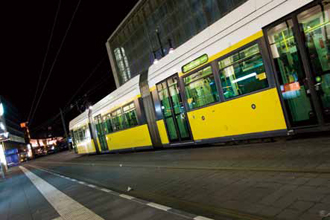
Different H.264 profiles are useful and important to maximize performance and efficiency, which affects camera selection. “Outside the top end of applications, people evaluate camera performance by visually comparing images from the cameras with different profile settings,” said Andrew Pigram, Technical Director at Norbain. “Ultimately, users want the highest quality for the lowest bandwidth, but will choose the right video stream profile for recording, transmission and live viewing.”
The compression's performance is marked by how well it captures moving images, without spiking in bit rate. “There are a variety of simple yet effective ways to evaluate encoder performance, such as waving a hand in front of the camera or panning the camera itself, like simulating a speed dome,” said Bengt Christensson, Senior Director of Marketing, Ambarella.
 Baseline and high profile H.264 meet real-time requirements of about 100 to 200 milliseconds, with longer delays for megapixel, said Xiang Wei, CTO and VP of Engineering, Grandstream Networks.
Baseline and high profile H.264 meet real-time requirements of about 100 to 200 milliseconds, with longer delays for megapixel, said Xiang Wei, CTO and VP of Engineering, Grandstream Networks.
Using H.264 permits megapixel cameras to match standard definition (SD) bit rates. An SD PTZ camera using MPEG-4 compression would need about 2.5 to 4.0 megabits per second (Mbps); the bit rate would fall to 1 to 1.75 Mbps using H.264, keeping storage manageable. “Most cannot see a difference between 1.5 Mbps and 6 Mbps in H.264 in side-by-side testing,” said Ed Thompson, CTO of DVTel.
However, some integrators prefer to work with MPEG-4 over H.264, minimizing any effects on quality. “It depends on the surveillance and recording platform because one of the serious cons is not every manufacturer supports the H.264 codec, particularly in remote monitoring situations,” Moody said.
 Multiple Streams
Multiple Streams
No single compression profile will make or break a camera — it boils down to the viewing purpose. Nearly all megapixel cameras support multiple streams, allowing users to choose the appropriate one for different situations. “During off hours, a building could be monitored with M-JPEG at a slow frame rate, and switch to H.264 at a faster frame rate when an alarm is triggered,” said Becky Zhou, APAC Sales Director for Arecont Vision.
H.264 compression is less efficient with motion and also loses detail, while M-JPEG does not lose a frame. “If you have a lot of movement and every pixel changes every second, H.264 predicts what happens and what takes place in the scenery,” said Gerrit Schreiber, Senior PM at Basler. “But with M-JPEG, you are looking at the detail. For a plain surface, M-JPEG is most clear. But if you are looking at a mosaic with a high amount of detail, M-JPEG will increase bandwidth requirements.”
“M-JPEG is somewhat like the cockroach of the industry: It isn't very pretty, but it's very good at what it does, and it isn't going anywhere,” said Ian Johnston, CTO of IQinVision.
The lifespan of M-JPEG will be extended by increased storage. “There's going to come a time when cloud storage becomes so cheap and everyday, storage constraints will be a thing of the past,” said Todd Pinnell, PM for Video at Speco Technologies. “It's what you want to see and what you want to pay.”